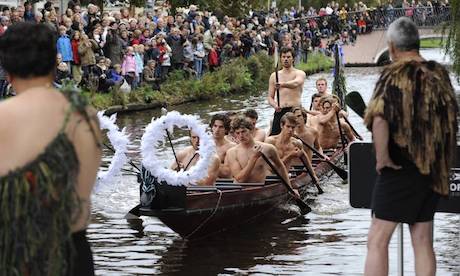A New Zealand Memorial and Garden has been opened at Zonnebeke, Belgium, in time for the 100th anniversary of the battle of Passchendaele.
It is one ‘petal’ of a larger memorial for all those who died there – including German soldiers.
It’s also a departure from the style of tributes in the 1920s to the ‘glorious dead’, with a century of perspective.
Passchendaele Society director Greg Hall argues those who died are no more heroes than those who survived and had to come back to pick up and carry on their lives.
“What’s the difference between someone who performed bravely and came home, and the person who probably ran into a burst of German gunfire, and didn’t [come home]? ”
Words like ‘sacrifice’ and ‘nationhood’ also bother Hall. He argues the language of those war memorials – the “glorious dead”, “honour” and “sacrifice” – is very much the language of the time.
“New Zealand sent 100,000 men away. We had 57,000 casualties, 18,000 killed.
“The population at the time was only one million. The impact was not only devastating but it also happened on the other side of the world.
“The chances of a mother visiting her son at a named grave were pretty remote.”
On a single day in World War I – October 12, 1917 – 846 New Zealanders died in the Battle of Passchendaele in Flanders, Belgium.
Many more died later from wounds received on the day, with the total number of wounded, dead and missing in 24 hours a staggering 2740.
On the evening of October 11, a crew of 14 paddled a waka down a canal in the Belgian city of Ieper (Ypres in French) to the Menin Gate memorial.
Te Hono ki Aotearoa (The Link to New Zealand), was made by master waka builder Hekenukumai Busby of Doubtless Bay for a museum in the Dutch city of Leiden seven years ago.
It was crewed by eight Maori and six members of the Njord Royal Student Rowing Club from Leiden.
Source
